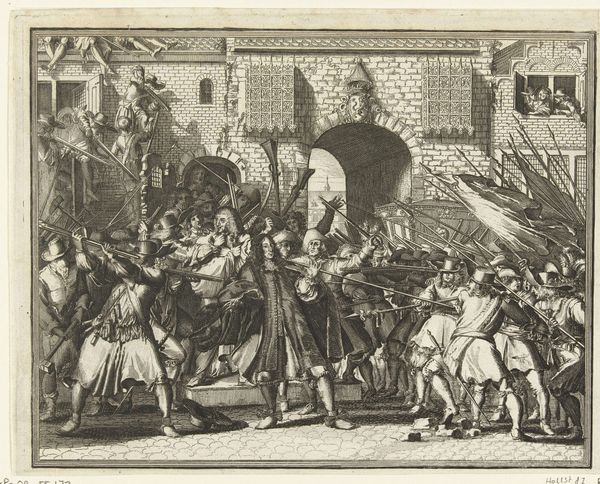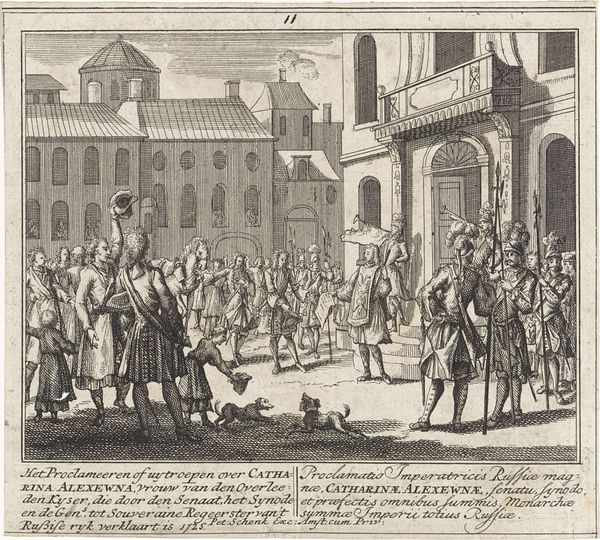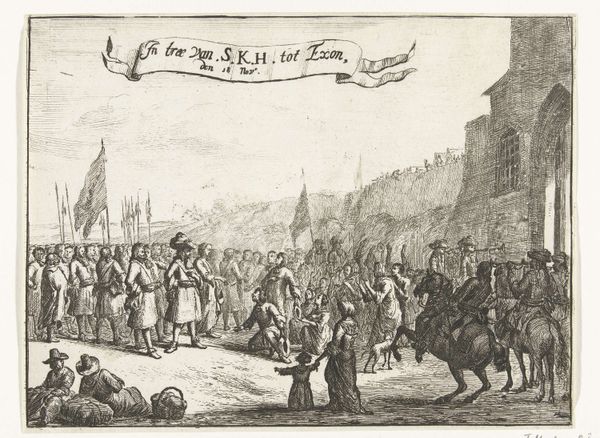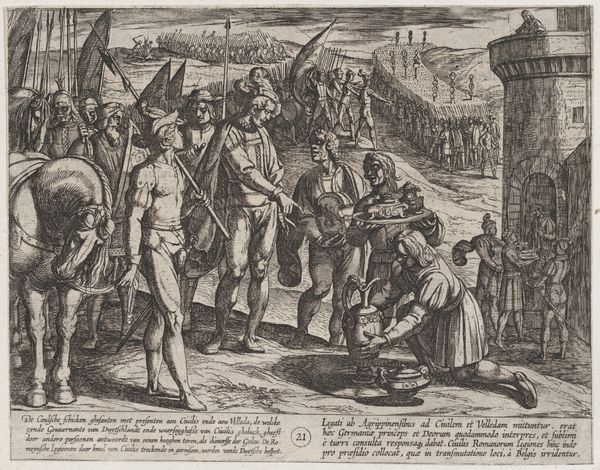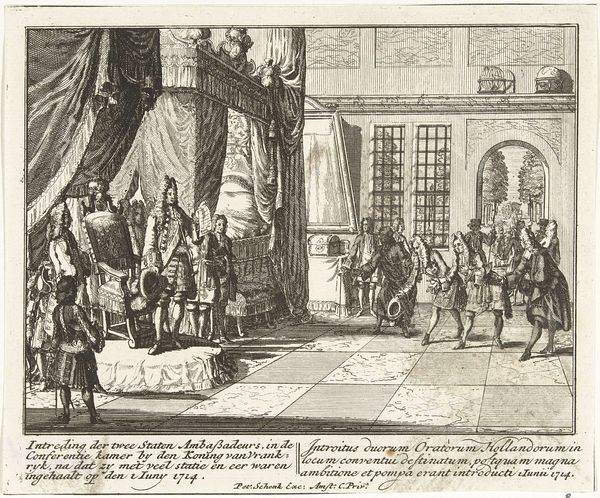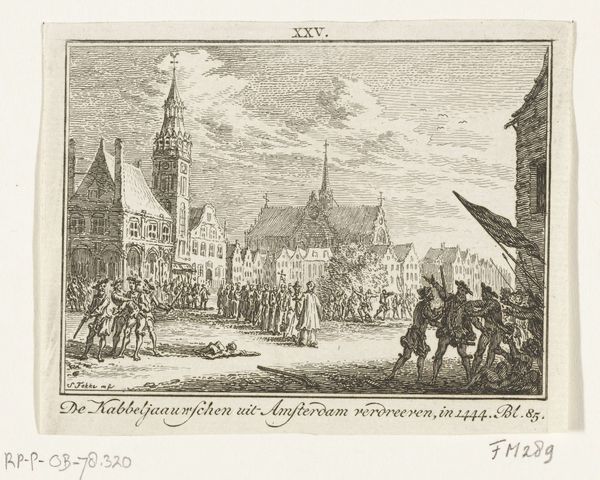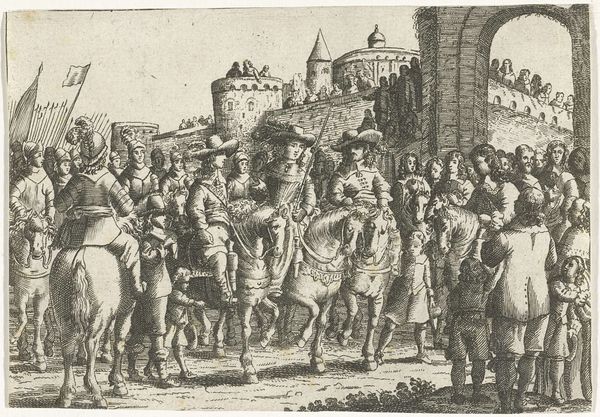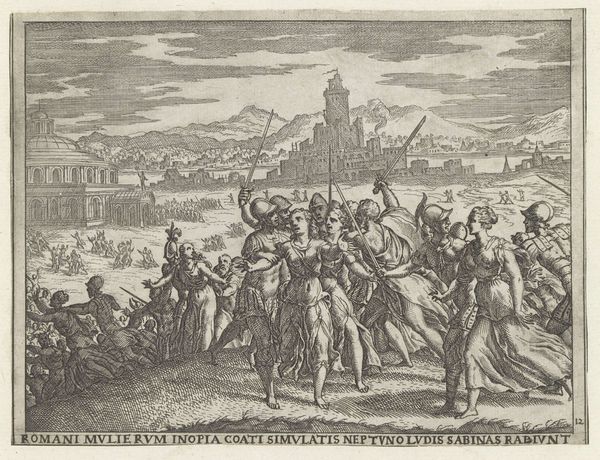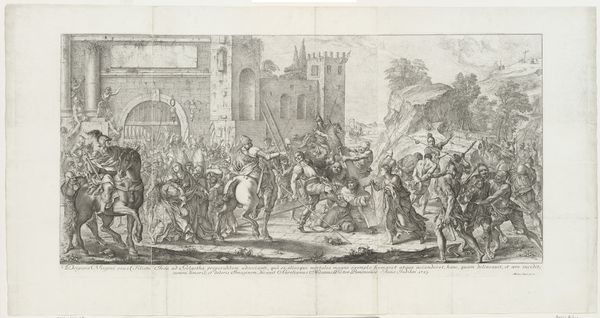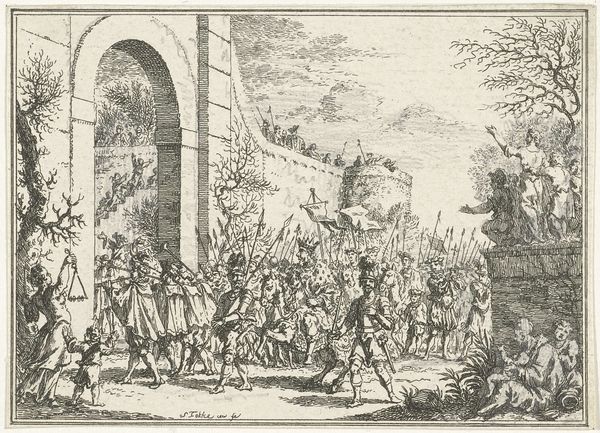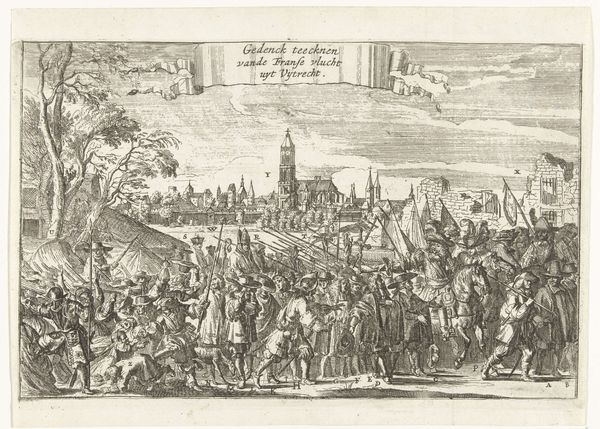
print, engraving
# print
#
mannerism
#
figuration
#
geometric
#
line
#
history-painting
#
engraving
Dimensions: 150 mm (height) x 208 mm (width) (monteringsmaal), 141 mm (height) x 203 mm (width) (plademaal)
Curator: This print by Philips Galle, from 1569, depicts “The people of Israel divided between Tibni and Omri." What strikes you most about this engraving? Editor: It’s definitely crowded! The sheer number of figures is quite overwhelming, and their tense postures and the ruined architecture add to this sense of turmoil and division. What underlying messages can we discern from this dense composition? Curator: Absolutely. Galle, working in the Mannerist style, is visually interpreting a power struggle, one which reflects a broader theme of conflict, especially during the religious wars of the 16th century. Think about it: How does the imagery of societal division and decaying structures resonate within a religiously fraught context? Does it echo contemporary political divisions? Editor: So the chaotic composition and the ruined setting…they aren't just aesthetic choices but actually reflect the societal instability of the time? It’s like the physical landscape mirrors the fractured state of the nation. But isn't the choice of a biblical subject matter significant? Curator: Exactly. Consider how the choice of a biblical narrative adds another layer. It universalizes the theme of conflict, framing contemporary events within a familiar historical context, while implicitly offering a moral lens. What implications arise when the people are positioned into factions behind leaders? Editor: That’s interesting. I hadn't considered the print as an argument on governance! So Galle is not only depicting history, but engaging with current affairs through a religious lens? Curator: Precisely. He's using the past to comment on the present, creating a dialogue between history, religion, and the turbulent politics of his era. I’d say he successfully translates theological questions into a crisis of governance. Editor: I learned that by examining the themes present in this piece, we gain valuable insights into the sociopolitical context. Thanks so much for lending your insight!
Comments
No comments
Be the first to comment and join the conversation on the ultimate creative platform.


